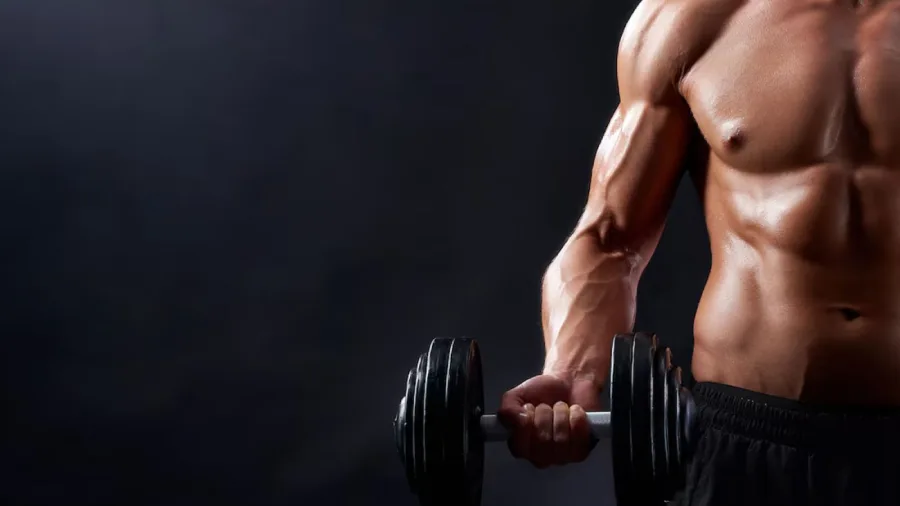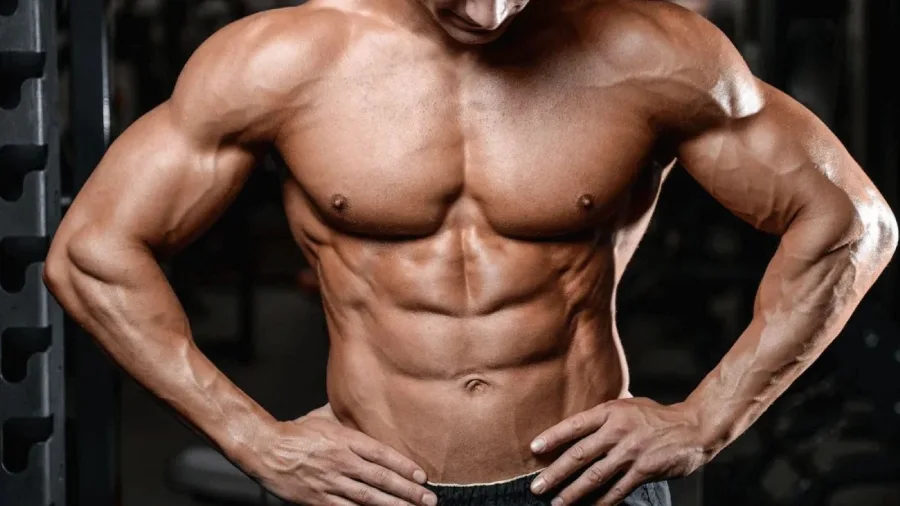Skeletal muscle fibres are one of the most amazing structures in the human body that enable most of the body’s movement, stability and many more functions. Improving muscle knowledge presents possible information to the students regarding its function in the body, as well as their general health. Below are twelve facts and interesting facts that seem to explain the detailed muscle and its importance.
You can visit our previous article on Aesthetic Physique if you really wanna build it.
-
About Muscle fibres:
- 1. Muscles Make Up a Significant Part of Body Weight
- 2. Smooth muscles, skeletal muscles and cardiac muscles.
- 3. There are over 600 muscles in the human body
- 4. According to the definition, skeletal muscles should be the ones that can only pull and not the ability to push.
- 5. The strongest muscle
- 6. Muscles are made of fibres
- 7. Muscle memory
- 8. Fast-twitch and slow-twitch muscle fibres
- 9. The Largest Muscle
- 10. Muscles and Energy Expenditure
- 11. Protein is essential for muscle growth and repair
- 12. Muscle wasting
- Conclusion
- Frequently Asked Questions
About Muscle fibres:
1. Muscles Make Up a Significant Part of Body Weight
Muscles are an important part of the human body tissue; they form 40 – 50 per cent of body weight in adults. This much connective tissue is needed for motion, to support the stand, to produce heat, and to metabolise the nutrients needed by the body. Muscle tissue is nutritionally active,, meaning that it requires more calories compared to the fat tissue, hence a higher basal metabolism rate.

2. Smooth muscles, skeletal muscles and cardiac muscles.
There are three fundamental classifications of muscles within the human body and tissues which make each of them different from the other.
- Skeletal Muscles: These are the involuntary muscles that are firmly connected to the bones through tendons and can only be controlled deliberately. Some of the examples of such muscles include the biceps, the quadriceps and the deltoids. Skeletal muscles are elongated, branched cells that contain many nuclei and contain cross-striations because they are composed of parallel actin and myosin filaments.
- Cardiac muscle: It is found only in the heart and has rhythmic and involuntary contraction to pump blood in the body. Cardiac muscle cells are also striated as well as contain intercalated discs, which help in simultaneous contractions.
- Smooth muscles: These are voluntary muscles in the human body whose fibres are striated and are found in the skeleton, including the limbs and the body wall, but not the face and mouth. It contains digestion, blood circulation and excretion of urine and regulates other involuntary functions. The smooth muscles lack stripes and are elongated in structure, composed of spindle-shaped cells.
3. There are over 600 muscles in the human body
In the human body, there are over 600 muscles, and every one of them provides different functions of people’s mobility and balance, as well as participating in the process of blood circulation and digestion. Skeletal muscles act singly and in combination, that is, the coordinated contraction of the muscles that is needed to produce the proper and useful movements in this system, upsetting the body’s balance. Some, such as biceps brachii and quadriceps femoris, are familiar, whereas others, such as platysma and pectoralis minor, are not often mentioned; however, they are part of the muscles in the body.
4. According to the definition, skeletal muscles should be the ones that can only pull and not the ability to push.
Thus, muscles have several functions, and one of them is to contract and hence shorten; therefore, muscles are said to play the role of pulling rather than pushing bones. If there is a movement on the joint, there is an antagonistic muscle or a group of muscles in particular in response to it. For instance, the biceps and triceps muscles contract and relax to bend and straighten the part of the arm concerned with the bending of the elbow. It is the muscle which does not assist in a contraction to flex the arm at the elbow joint and must be in a state of relaxation when the biceps contract.
5. The strongest muscle
As much as this is true, it is quite ironic that there is a lot of controversy regarding which part of the body is referred to as the strongest muscle in the human body. However, the masseter muscle, which is the jaw muscle, is considered to be the most forceful muscle with the highest force production capacity. This muscle enables the production of the tremendous bite force, something near 200lb, that is necessary in slicing and grinding food.
6. Muscles are made of fibres
The muscles are groups of tissues containing thousands of fibres, which are also known by the name muscle fibres or myocytes. These fibres are called myofibrils and they consist of proteins which are known as actin and myosin, responsible for the contraction of muscles. The muscle fibres can, for this reason, be classified into several categories about their functions and contraction activities.
The slow-twitch fibres: Also known as the slow contracting fibres or endurance muscle fibres, which guarantee fatigue resistance when standing, in long-distance racing.
Fast fibres are also referred to as glycolytic, oxidative-glycolytic, or Type II skeletal muscles. These are tissues of muscles that contract at a fast rate and with a short and forceful manner, but they are not able to sustain this for a long time. They are used more especially when making rapid movements, such as in the act of running or lifting weights. Type II fibres are further classified into two types: Type IIa, which are also known as the FOG fibres and Type IIb, referred to as the F G fibres.

7. Muscle memory
Muscle memory is a function that enables muscles to gain strength as well as resume proper coordination within the shortest time possible after being inactive. This is because of neural changes that are bound to happen whenever an individual is involved in the performance of a certain movement or an exercise. In matters related to muscle memory, there are changes in the central nervous system, including motor unit recruitment and enhancement of synaptic connections, which lead to more efficient performance of the activities that one has practised.
8. Fast-twitch and slow-twitch muscle fibres
A muscle containing two types of fibres, which gives the ability of different physical characteristics:
- Type IIB fibres, these muscles are intended to make sudden force and speed. Contrary to type I brand the main characteristic of this type of muscle is that it can generate a great amount of force for short periods only. They are anaerobic organisms, which means they do not depend on oxygen to produce their energy requirement. Type-I fibre is a slow-contracting fibre, while type-II fibre is a fast-contracting fibre; however, the latter has a large diameter to generate more force but gets fatigued easily.
- Type I fibres: These muscle fibres are developed more for endurance purposes and long-term activities. They are aerobic, thus, they require oxygen to be involved in the process of producing energy in the cells. Type 1 muscle fibres, which are also termed as slow-twitch muscle fibres, are smaller in size, exert less force, but have a high degree of fatigue resistance.
9. The Largest Muscle
The gluteus maximus is the largest muscle of the human body. This muscle is found in the buttocks and the function of the muscle for moving the hip as well as the thigh. The activities that involve its use are climbing stairs, running, and standing up from a sitting position. The gluteus maximus, as the primary muscle, contributes to the upward posture and produces forceful dynamics in the lower limb movements.
10. Muscles and Energy Expenditure
Muscles are also referred to as being metabolically active tissues and therefore come next in priority when it comes to energy consumption, even at rest. Hence, when one has more muscle mass, one can easily be able to control his or her weight through the use of metabolism. The energy requirements for the muscle tissue are attributed to the fact that they have a steady requirement for metabolic processes such as repair, synthesis of contractile proteins and the contraction of skeletal muscles.
11. Protein is essential for muscle growth and repair
Muscle mass incorporates protein, so protein is vital to build and repair muscles. This is because after exercising, muscles are exercised and then torn, which requires to be healed. This way, sufficient intake of proteins also contains the units in build or amino acids essential in muscle formation and thus strength. The protein-RDA is a little flexible depending on the age of the individual, gender, and physical activity level, but the requirement may be higher for athletes and other weight trainers.
12. Muscle wasting
This condition occurs due to inactivity, ageing and some diseases, which hurt the human muscles in the sense that the size of the involved muscles reduces. Atrophy of muscles leads to a reduction in the actual size, power as well and usefulness of the muscles. Aerobic activities and other strength training activities should be done regularly to reduce muscle wastage in the body. Strength training develops muscle mass through the expansion of the fibre diameter and adapts the nervous system of a person.

Conclusion
Muscles are fascinating organ components of the human body because they facilitate good health and body movements. Thus, having at least basic knowledge of muscles and their interactions, it is possible to decide more consciously on our physical condition and health. It would also mean that, in a way, we should learn how to exercise, eat right, or move properly so that our muscles will have a long and healthy life in our lives. Muscles are not only a performance factor but also have metabolic, protective and quality of life functions.
Frequently Asked Questions
1. How much of the human body weight is made up of muscle?
Muscles make up about 40–50% of an adult’s body weight. They are essential for movement, posture, heat production, and metabolism.
2. What are the three types of muscles in the human body?
The three types of muscles are:
- Skeletal muscles (voluntary, striated, attached to bones)
- Cardiac muscle (involuntary, found only in the heart)
- Smooth muscles (involuntary, found in organs like the digestive system)
3. Why is protein important for muscles?
Protein is vital because it helps repair and build muscle tissue, especially after exercise when muscles experience tiny tears. Adequate protein intake supports muscle growth, strength, and recovery.
4. What causes muscle wasting, and how can it be prevented?
Muscle wasting can result from inactivity, ageing, or certain diseases. It can be prevented by regular strength training and aerobic exercise, which help maintain muscle size, strength, and function.







